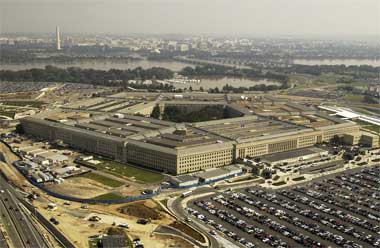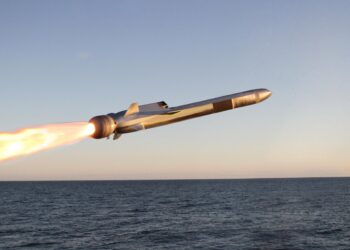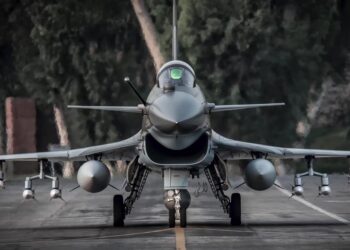The fight against terrorism reflected the Pentagon’s unpreparedness to conduct low-intensity operations. Now, the battle for the Pentagon’s budget and the struggle to find the right budget balance with a clear mission statement is well under way.
The end of each major war has been traditionally followed by defense cuts. As such, the Obama administration announced cuts of $486 billion over the next 10 years, which was expected. But unless U.S. lawmakers make concessions, a larger and very damaging cuts of an additional $500 billion, known as Sequestration, will take effect. Cutting defense spending too much and too fast is a dangerous precedent.
Regardless who wins the U.S. presidential elections in November, military cuts will materialize. Instead of reaching for emotional arguments to defend or critique military cuts, rational answers are necessary to keep the U.S. military razor sharp but in line with budget realities.
How the Pentagon created this mess:
The U.S. Marine Corps is the 911 force of the U.S. military. Light, fast, powerful and flexible, the Marines get the call. However in the last decade, the Marines have perused very expensive programs. The MV-22 Osprey tilt-rotor while innovative and fast costs as much as an F/A-18 Super Hornet. The Joint Strike Fighter (JSF) F-35B short-take off and vertical landing (STOVL) has turn out to be the most expensive of the F-35 variants. The Expeditionary Fighting Vehicle (EFV), but to the Marines’ credit, was cancelled due to poor reliability and high costs. In its place is an effort to field a much more cost-effective Amphibious Combat Vehicle (ACV) and the Marine Personnel Carrier (MPC).
The U.S. Navy has also embarked into a number of controversial programs of its own, such as the development of the next-generation Gerald R. Ford Class aircraft carrier. While no other country comes close in number of aircraft carriers or size, the U.S. Navy decided to spend billions to develop the next-generation carrier anyway. The F/A-XX aims to replace the Super Hornet, even though Lockheed Martin hasn’t even delivered the first F-35C and no definition has been provided to what sixth-generation capabilities will be. The recent announcement to replace the Ohio Class ballistic missile submarine known as SSBN-X, delivering each boat could be as expensive as an aircraft carrier. The Littoral Combat Ship (LCS), a vessel that is well over budget with limited capabilities. In an effort of frugality, the U.S. Navy cancelled the next-generation CG(X) cruiser and Zumwalt Class destroyer due to their high acquisition costs.
Other programs that never made the cut are the U.S. Army’s XM2001 Crusader self-propelled howitzer. The vehicle was too expensive and heavy for the light and mobile vision of the U.S. Army’s Future Combat System (FCS), which in turn got cancelled because of high costs. The cancelation of the next-generation RAH-66 Comanche attack helicopter, even though the AH-64 Apache was first introduced in 1984; today there are only a few attack helicopters in the world market and even fewer that can match the Apache’s capabilities.
What the Pentagon can do:
In the words of ex-Secretary of Defense Robert Gates “the culture of endless money” is gone and so are the blank checks. The Pentagon is too lenient and it needs to get tough with defense contractors. It is necessary to dismantle the established contract payable culture, in which often and without merit defense contractors get pay on time for over budget and late programs.
The Marines ran many of these trouble programs, the idea behind EFV and MV-22 was to perform faster over-the-horizon amphibious operations at a much greater stand-off distance. But why? No other military in the world comes close to performing amphibious operations as efficient and fast as the Marines. This article doesn’t advocate rendering the Marines’ capabilities unnecessary, because the Marines capabilities go beyond than just ship-to-shore operations.
There is no doubt that budget comprises translates into compromises of capabilities. It is difficult to find the optimum balance between capabilities and budget. But the U.S. military is sometimes a little too fast and too eager to maintain capability supremacy, resulting in budget overruns and high acquisition costs. At the moment there are numerous programs that just aren’t necessary like the U.S. Navy SSBN-X boomer replacement or the U.S. Air Force next-generation Long-Range Strike Bomber. These future systems are mostly unjustifiable at the moment; it is not like any of the old systems were in urgent need of replacement, except for the U.S. Air Force KC-135 Stratotankers.
The Pentagon should focus on trouble programs, upgrade weapon systems, spread out future purchases and postpone other project. Clean sheet designs and futuristic platforms are not always the most cost effective solution. One of the best examples comes from the U.S. Army when they decided to purchase the IAV Stryker based on the Canadian LAV III APC. Instead of spending hundreds of millions on development for a clear sheet design, the decision was made to purchase an off-the-shelf wheel vehicle. Initially met with a high degree of prejudice, for being among other things a wheel vehicle, the Stryker has become the star of the U.S. Army.
Many of these programs are not ready for prime-time; they suffer from incompetent administration, immature technologies and lenient development schedules. Many envision programs are simply too far ahead of their time. The tragic development of the F-35 variants can be partially attributed to the stubbornness of the Marines. The program is late and well over budget because the Marines insisted that the F-35B be developed first, then the F-35A or F-35C, rather than last as originally planned. The MV-22 Osprey tilt-rotor, the Marines wanted them to be small enough to fold and fit into Landing Helicopter Deck (LHD) ships. For this reason, hydraulic lines under pressure between foldings ruptured during flight testing killing dozens in numerous crashes.
The Pentagon should only take a supervisory position to make sure that defense contractors deliver on time and on schedule, but should stay out of defense contractor’s way in terms of development. At the same time, the Pentagon should require defense contractors to take more development risks. Defense contractors have proven to be far more reckless by gambling with taxpayer’s money than if they would be risking their own.
The Cold War ended because in many respects, the U.S. outspent the U.S.S.R. in defense; it took hundreds of billions to confront “the evil empire”, effectively pushing the U.S.S.R. into bankruptcy. It is incomprehensible that billions have been spent fighting low-intensity conflicts, pursuing immature technologies, and financing over budget and late programs. Borrowing money from China to pay for the Pentagon and defense contractor’s short comings, only to turn around and say the U.S. is worry about the rising Chinese military makes absolutely no sense. The U.S. is bankrupting itself. Military spending and war might be good for the economic, but only in the short term. The mighty U.S. military cannot be the protector of democracy by borrowing money from communist China; it is well pass time to rain down on irresponsible and unnecessary defense projects.











